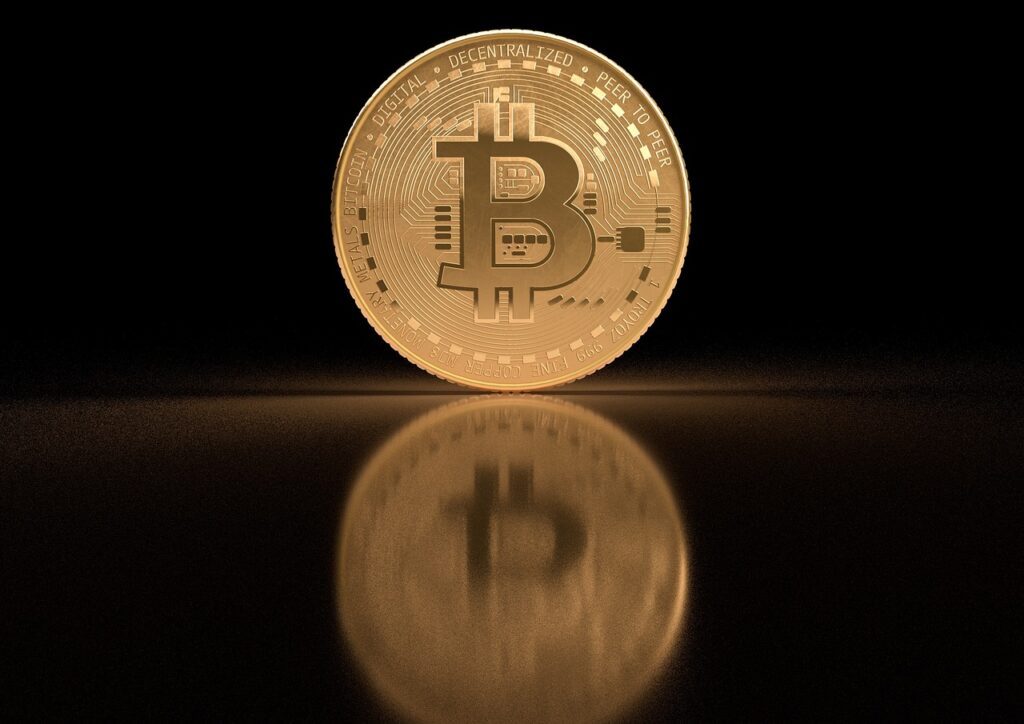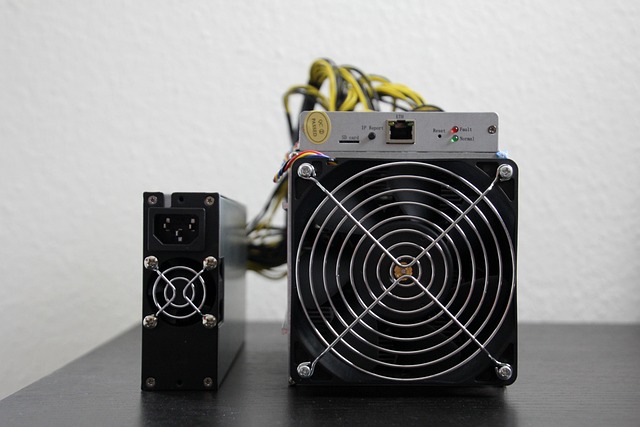Navigating the Layers of Decentralized Finance Architecture
Navigating the Layers of Decentralized Finance Architecture

What is Decentralized Finance?
Decentralized finance, often referred to as DeFi, is a revolutionary concept that aims to transform the traditional financial system. In simple terms, DeFi is a decentralized form of financial services that operate on blockchain technology, eliminating the need for intermediaries such as banks. This decentralized nature empowers individuals by giving them complete control and ownership over their financial assets and transactions. No longer confined by the limitations of traditional financial institutions, DeFi allows users to access a wide range of financial services, including lending, borrowing, trading, and investing, with just an internet connection and a compatible digital wallet.
At the heart of decentralized finance lies blockchain technology, which serves as the underlying infrastructure that powers this new financial ecosystem. Blockchain ensures transparency, security, and immutability of transactions, as it maintains a decentralized and distributed ledger that is accessible to anyone on the network. By utilizing smart contracts, which are self-executing agreements written in code, DeFi applications can automate complex financial processes and eliminate the need for intermediaries. This not only reduces the risk of human error but also reduces costs by eliminating the fees associated with traditional financial intermediaries. In essence, DeFi represents a paradigm shift in finance, allowing individuals to have full control over their financial decisions, while also democratizing access to financial services for those who were previously underserved by the traditional banking system.
Understanding the Architecture of Decentralized Finance
Decentralized finance, also known as DeFi, is a revolutionary concept that is disrupting traditional financial systems. At its core, DeFi seeks to eliminate intermediaries and enable direct transactions between individuals. This is made possible through the use of blockchain technology, which forms the backbone of DeFi architecture.
The architecture of DeFi is built on the principle of decentralization, which means that power is distributed across a network of nodes rather than being controlled by a single entity. This ensures that no single party has complete control over the system and makes it resistant to censorship and manipulation. Additionally, smart contracts play a crucial role in decentralized finance by automating and enforcing the terms of agreements between parties. These self-executing contracts eliminate the need for intermediaries and enable secure and transparent transactions. Overall, the architecture of DeFi is designed to promote transparency, accessibility, and financial inclusion by removing barriers and empowering individuals to have more control over their financial activities.
The Role of Blockchain Technology in Decentralized Finance
The Role of Blockchain Technology in Decentralized Finance is undeniably crucial. Blockchain serves as the underlying technology that powers the entire decentralized finance ecosystem. It ensures the transparency, security, and immutability of financial transactions, eliminating the need for intermediaries.
By utilizing blockchain, decentralized finance platforms can offer users a trustless environment where they have full control over their assets. Blockchain’s distributed ledger system allows for real-time transaction verification, making it impossible for anyone to tamper with or manipulate the data. This not only enhances the security of financial transactions but also eliminates the need for third-party verification and lowers transaction costs. Furthermore, the decentralized nature of blockchain ensures that no single entity has the power to control or censor transactions, providing equal opportunities for participants in the decentralized finance space.
Exploring the Core Components of Decentralized Finance Architecture
Exploring the core components of decentralized finance architecture allows us to gain a deeper understanding of how this revolutionary system operates. At its core, decentralized finance, or DeFi, is built upon the foundation of blockchain technology. This distributed ledger system ensures transparency, security, and immutability, forming the backbone of the entire DeFi ecosystem.
One crucial component of DeFi architecture is smart contracts. These self-executing algorithms enable the automation of various financial transactions and agreements, eliminating the need for intermediaries. Smart contracts are designed to execute predefined conditions when specific criteria are met, ensuring the transparency and integrity of transactions. They play a vital role in providing trust and eliminating the risk of fraud, making DeFi systems more efficient and secure. By leveraging smart contracts, decentralized finance opens up a world of possibilities for automated and programmable financial services.
The Importance of Smart Contracts in Decentralized Finance
Smart contracts play a vital role in the world of decentralized finance. These self-executing contracts are built on blockchain technology and have the ability to automate transactions without the need for intermediaries. This not only reduces transaction costs but also eliminates the need for trust in traditional financial systems. By leveraging the power of smart contracts, decentralized finance can provide a more efficient and transparent way of conducting financial transactions.
One of the key advantages of smart contracts is their immutability. Once a smart contract is deployed on the blockchain, it cannot be altered or tampered with, providing a high level of security and reliability. This makes them particularly attractive for applications such as decentralized lending, where borrowers and lenders can interact directly without the need for a trusted third party. The terms and conditions of the loan are encoded within the smart contract, ensuring that both parties are held accountable and the terms are enforced automatically. Overall, smart contracts are revolutionizing the financial landscape by providing a decentralized and secure platform for various financial activities.
Examining the Layer 1 Protocols in Decentralized Finance Architecture
Layer 1 protocols play a crucial role in the architecture of decentralized finance (DeFi). These protocols serve as the underlying framework that enables secure and transparent transactions to take place. At its core, layer 1 refers to the base layer of a blockchain network, where the fundamental rules and consensus mechanism are established. By leveraging protocols such as Ethereum, Polkadot, or Solana, DeFi applications can operate independently, without the need for intermediaries like traditional financial institutions.
The primary purpose of layer 1 protocols in DeFi is to provide a decentralized infrastructure that ensures immutability and trust. By relying on blockchain technology, these protocols ensure that transactions are recorded on a public ledger that is accessible to all participants. Additionally, layer 1 protocols facilitate the execution of smart contracts, which are self-executing agreements with predefined rules. With the help of smart contracts, DeFi applications can automate various financial processes, such as lending, borrowing, or yield farming, creating a more efficient and inclusive financial system that is accessible to anyone with an internet connection.
Unveiling the Layer 2 Solutions in Decentralized Finance
Layer 2 solutions play a crucial role in solving the scalability issues of decentralized finance (DeFi). As the popularity of DeFi continues to rise, the Ethereum network, which serves as the foundation for many DeFi applications, faces challenges in processing a high number of transactions.

One popular type of Layer 2 solution is known as sidechains. Sidechains operate alongside the main Ethereum network, allowing for faster and more efficient transactions. By processing transactions off-chain and then settling them on the main chain, sidechains significantly increase the throughput and reduce the congestion experienced on the primary network. This enables DeFi applications to handle a higher volume of transactions, enhancing the overall user experience and scalability of the decentralized finance ecosystem. Additionally, sidechains can offer various features, such as lower transaction fees and specialized functionalities, tailored to specific DeFi use cases.
The Significance of Decentralized Applications (DApps) in Finance
Decentralized applications, commonly known as DApps, have become a significant force in the world of finance.

Furthermore, DApps provide a secure and efficient way to execute financial transactions. With traditional systems, transactions can be slow, expensive, and subject to the risk of fraud. However, by leveraging blockchain technology, DApps enable instant, low-cost transactions that are verified by a network of decentralized nodes. This ensures that every transaction is recorded on the blockchain, making it virtually impossible to alter or tamper with the data. As a result, DApps provide a level of security and trust that is unparalleled in traditional financial systems. This creates a more inclusive financial ecosystem, empowering individuals who may not have had access to financial services before and driving innovation in the finance industry.
Analyzing the Role of Decentralized Exchanges in Decentralized Finance
Decentralized exchanges (DEXs) play a crucial role in the world of decentralized finance (DeFi). Unlike traditional centralized exchanges, DEXs operate on blockchain technology, allowing users to trade cryptocurrencies directly with one another, without the need for intermediaries. This brings a new level of autonomy and transparency to the financial ecosystem.
One of the main advantages of DEXs is that they provide users with greater control over their assets. Since transactions are executed on the blockchain, users retain ownership of their digital assets throughout the trading process. This eliminates the need to trust a centralized entity with custody of funds, reducing the risk of hacking or theft.

• DEXs operate on blockchain technology, allowing users to trade cryptocurrencies directly with one another
• Users retain ownership of their digital assets throughout the trading process
• Eliminates the need to trust a centralized entity with custody of funds
• Reduces the risk of hacking or theft
• More inclusive environment, accessible to anyone with an internet connection and compatible digital wallet
• Opens up opportunities for individuals in regions with limited access to traditional financial services
Understanding the Security Measures in Decentralized Finance Architecture
When it comes to decentralized finance (DeFi) architecture, security measures play a crucial role in ensuring the safety of users’ funds. With the absence of intermediaries, it becomes imperative to implement robust security protocols to safeguard against potential threats and vulnerabilities. One of the primary security measures in DeFi is cryptography, which is used to encrypt data and verify transactions. Through the use of cryptographic algorithms, sensitive information such as private keys and transaction details are kept secure, minimizing the risk of unauthorized access or tampering.
In addition to cryptography, another essential security measure in DeFi is the implementation of decentralized consensus mechanisms. These mechanisms, such as proof-of-stake (PoS) and proof-of-work (PoW), enable trustless and transparent transactions by requiring participants to validate and reach a consensus on the state of the blockchain. By utilizing distributed ledger technology, DeFi platforms ensure that transactions are executed based on predefined rules, minimizing the risk of fraudulent activities. Moreover, decentralized consensus mechanisms also contribute to the resilience and resistance against censorship or attacks, making DeFi platforms more robust and secure.
What is Decentralized Finance?
Decentralized Finance, also known as DeFi, is a financial system built on blockchain technology that aims to provide open and permissionless financial services to anyone, without the need for intermediaries like banks.
How does Decentralized Finance architecture work?
Decentralized Finance architecture leverages blockchain technology to create a decentralized network of financial applications. It allows for peer-to-peer transactions, smart contracts, and decentralized exchanges, removing the need for traditional financial intermediaries.
What role does blockchain technology play in Decentralized Finance?
Blockchain technology is the foundation of Decentralized Finance. It ensures transparency, immutability, and security by recording and verifying all transactions on a distributed ledger. This technology enables trustless and decentralized financial interactions.
What are the core components of Decentralized Finance architecture?
The core components of Decentralized Finance architecture include blockchain networks, smart contracts, Layer 1 protocols, Layer 2 solutions, and decentralized applications (DApps). These components work together to create a secure and decentralized financial ecosystem.
Why are smart contracts important in Decentralized Finance?
Smart contracts are self-executing contracts with the terms of the agreement directly written into code. In Decentralized Finance, smart contracts automate and enforce the execution of financial agreements, ensuring transparency and eliminating the need for intermediaries.
What are Layer 1 protocols in Decentralized Finance?
Layer 1 protocols are the underlying blockchain networks that support Decentralized Finance applications. Examples include Ethereum and Binance Smart Chain. These protocols provide the foundation for secure and decentralized financial transactions.
What are Layer 2 solutions in Decentralized Finance?
Layer 2 solutions are technologies built on top of Layer 1 protocols to address scalability and transaction speed limitations. These solutions, such as sidechains and state channels, help enhance the efficiency and performance of Decentralized Finance applications.
Why are Decentralized Applications (DApps) significant in finance?
Decentralized Applications (DApps) enable users to access financial services directly, without intermediaries. They provide greater financial inclusivity, transparency, and control over one’s assets. DApps are a key element in the democratization of finance.
What is the role of decentralized exchanges in Decentralized Finance?
Decentralized exchanges (DEXs) allow users to trade cryptocurrencies directly with each other, without the need for intermediaries. DEXs provide greater security, privacy, and control over one’s funds, enhancing the decentralized nature of Decentralized Finance.
How are security measures implemented in Decentralized Finance architecture?
Security measures in Decentralized Finance architecture involve various techniques such as code audits, multi-signature wallets, transaction authentication, and secure key management. These measures aim to protect users’ assets and minimize the risk of hacks or fraud.
Todays Featured Product:
Buy, exchange and grow your crypto securely with a Ledger hardware wallet, combined with the Ledger Live app. It’s never been easier to keep your crypto safe and accessible. Buy direct from Ledger.com and get todays Special Offers Here.




